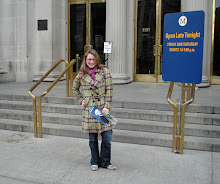
 Aside from being beautiful, these pieces by French Symbolist painter Odilon Redon, bear historical significance as a bridge between Impressionism and Modern Abstract Expressionism, no doubt leading into Surrealism as well. The Chariot of Apollo (above) and Pandora (right), struck me with their interestingly rudimentary line quality, their representational forms, and colorful yet muted palettes. Looking at them, I can't help but think that these are still frames of dreams, translated onto canvas.
Aside from being beautiful, these pieces by French Symbolist painter Odilon Redon, bear historical significance as a bridge between Impressionism and Modern Abstract Expressionism, no doubt leading into Surrealism as well. The Chariot of Apollo (above) and Pandora (right), struck me with their interestingly rudimentary line quality, their representational forms, and colorful yet muted palettes. Looking at them, I can't help but think that these are still frames of dreams, translated onto canvas.Inspired by the literary movement of the same name, Symbolism rejected rationalism and materialism that had come to dominate Western European culture, [and proclaimed] the validity of pure subjectivity and the expression of an idea over a realistic description of the natural world. The Symbolists' rejection of naturalism and narrative in favor of the subjective representation of an idea or emotion would have a significant effect on the artwork of the twentieth century, particularly the formulation of German Expressionism and Abstraction.(Heilbrunn Timeline of Art History)



















